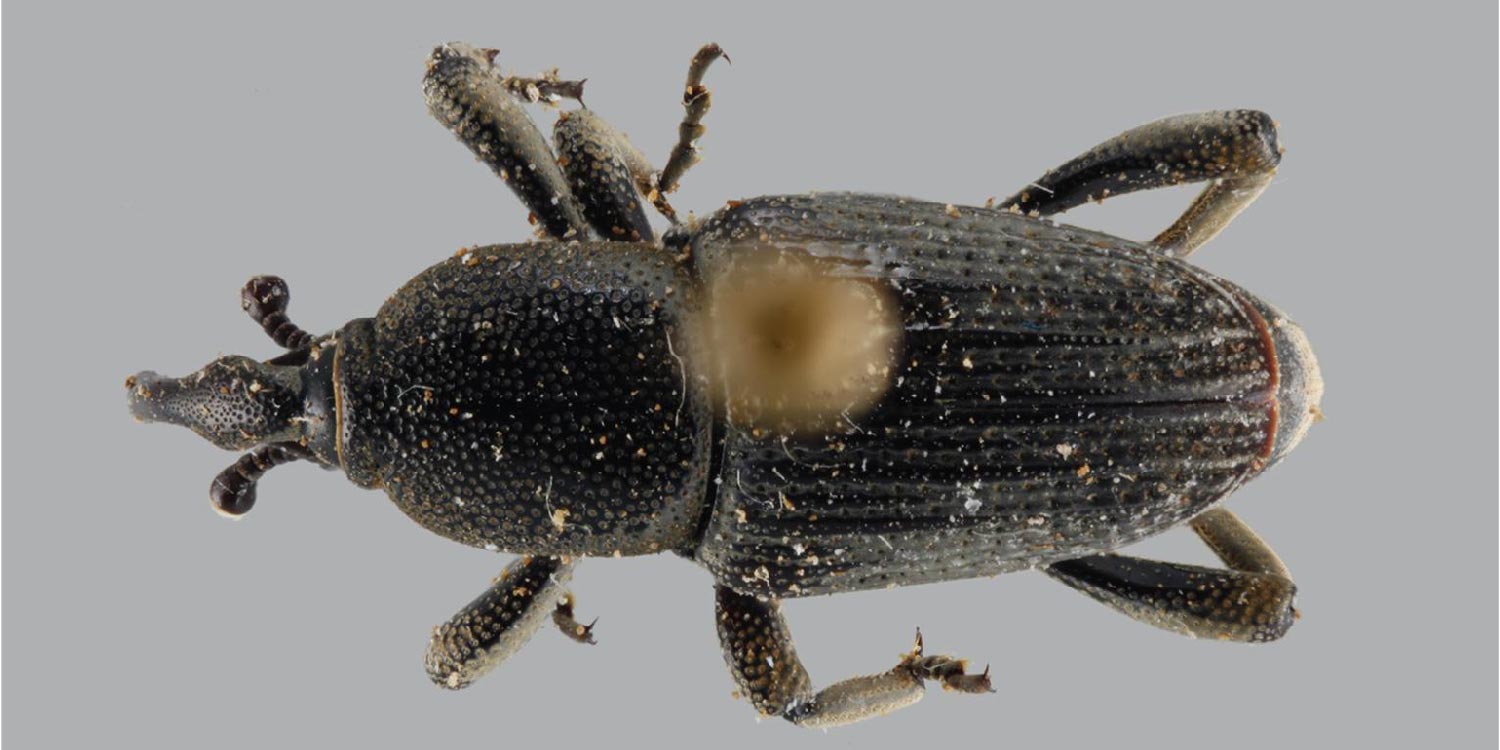Most destructive pest of Musa spp. It is widely distributed in all banana growing areas. Adult weevils (10-13 mm) are shiny reddish brown to black, with a long and curved snout, though functional, but the weevils seldom fly. Grubs/larvae are creamy white, stout, fleshy, legless, and wrinkled and spindle shaped, with red head. Eggs are laid in collar region or on under-ground rhizomes.
Grubs bore into the pseudostems and rhizome and make tunnels by feeding. Adults also bore into the suckers. As a result of the attack by adults and grubs, the central shoots gets killed, plants show premature withering, suckers get killed, fruits remain undersized and fewer in number. Fungi and bacteria accelerate rotting. Trees may break down with strong winds.
Control
- Planting of healthy suckers. Planting infected rhizomes increases the damage. It is most important to use vigorous uninfested planting material under good planting conditions. Planting material should be obtained from plantations free of weevils and examined carefully by taking one or two slices from it. If larvae, pupae or tunnels are present, the material must be destroyed
- Clean cultivation. The planting field should be free from weeds and previous plant debris.
- Good husbandry practices, such as clean weeding, manuring and mulching produce vigorous banana plants which have improved weevil tolerance
- Removal of pseudostems below ground level. Harvesting of all mature pseudostems at certain intervals, rather than continually, is suggested as a preventive measure of control. This discourages the continuous breeding of the weevil, as then there will be periods in which few young suckers are present.
- It is also necessary to destroy stumps of wind-damaged plants
- Chemical control will involve drenching Ranger when the soil is most at a rate of 40ml/20L.






